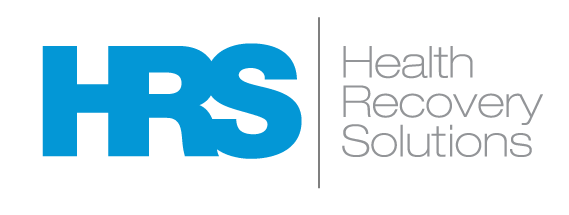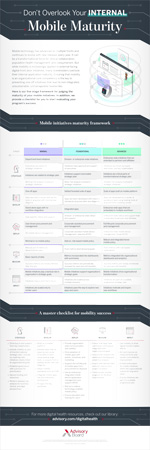Advisory Board, in partnership with Health Recovery Solutions, recently held a webinar to discuss how the health care industry can continue to make constructive progress on digital health in 2021. If you missed the live session, here are four takeaways to help you use digital health solutions to their fullest potential in 2021.
Why providers must embrace telehealth now
1. Digital health is moving beyond simple replacements for traditional visits to encompass robust, integrated solutions.
In 2020, digital health technologies changed the way care can be delivered. In one year, telehealth experienced a massive increase as baseline utilization grew from less than 1% of total visits to just under 20% of total visits.
The breadth of telehealth use has also expanded. Specialties that were reluctant to adopt telehealth in the past have finally embraced it and are signaling that they will keep using virtual modalities in the future. Behavioral health is an exceptional case, with utilization holding steady at two-thirds of all visits for the second half of 2020.
While the focus on telehealth in 2020 was mainly a replacement for traditional in-person visits, 2021 must bring an increased focus on using digital health to expand access and improve care beyond a traditional visit. Billions of dollars are flowing into digital health as investors expand from single-modality, single-purpose solutions to robust, integrated solutions that can be used for any patient or condition. We’ve seen that with the recent merger between Teladoc and Livongo to provide wrap-around care services with a combination of virtual consult technology and remote monitoring solutions.
2. Data will be essential to sustain the progress made in 2020
Despite huge growth in digital health utilization, familiarity, and investment in 2020, permanent changes to regulations have been incremental. Public and private payers have been slow to extend pandemic-related flexibilities, reflecting the entrenched views of many in the industry that digital health is only additive to traditional care.
2021 will be the year to demonstrate the value of digital health and build on the progress made over the past year. The data on utilization rates and quality outcomes coming out of 2020 will help make the case for the efficacy of digital tools as a genuine mode of care delivery. The industry will be able to answer outstanding questions such as:
- To what extent is virtual care a replacement for in-person care?
- Were no-show rates reduced, and by how much?
- Were transfers from skilled nursing facilities to hospitals fewer without compromising care?
The answers to these questions will help stakeholders measure digital health progress and assess how well these tools are serving patients.
3. Digital health won’t be at a tipping point until all patient populations can access digital health solutions
Although patients and providers tried digital health solutions out of necessity during the pandemic, most of them actually liked these technologies. Patients now view digital health solutions as ways to solve their own problems of access and convenience, and providers are looking to digital health solutions to help them practice top-of-license care.
It’s tempting to say that digital health reached a tipping point in 2020 because of increased adoption and satisfaction rates, but it’s not true for all patients. Underserved populations who could benefit most from digital health are often the ones who have the hardest time accessing it. Existing disparities in care are exacerbated for patients that lack access to devices, digital literacy, and broadband necessary to access digital care.
In 2021, stakeholders must assess the ways in which their digital health priorities and investments will mitigate or deepen inequities. Organizations further along in their journey must begin to advocate and partner with other stakeholders to identify and eliminate root causes of inequity.
4. Frontline staff embraced the transition to digital care
Clinicians worked as teams to enable collaborative, flexible responses and overcome the many challenges of Covid-19. From tiered telehealth solutions to remote monitoring from a patient’s home, Covid demonstrated the versatility of digital health. Frontline staff learned how to adopt digital health tools and apply technologies in new ways to best fit patients’ needs and deliver high quality care.
Everything is tied back to patient care at BayCare Health System in Florida. Care teams work together, outside of traditional silos, to guide patients through the Home Care program. BayCare can customize patients’ home monitoring experience, such as allowing patients to use personal devices. Because of the strong relationships between patients and care teams, patients have really embraced telehealth technologies.
Now health care leaders are looking at opportunities to embed digital health throughout the ecosystem and to improve continuity of care. Frontline staff must keep thinking creatively and responding flexibly to sustain momentum in 2021.
Learn more: Understanding digital health’s new normal—and preparing for its 'next normal'
Access the recording from our recent webinar to learn how the health care industry can continue to make constructive progress on digital health in 2021.
Health Recovery Solutions, ranked #1 by KLAS for Remote Patient Monitoring in 2020 and 2021, partners with healthcare organizations across the country to help reduce readmission, decrease costs, optimize clinician workflow, and improve patient outcomes with the most advanced telehealth and remote patient monitoring solution. As the industry's most comprehensive remote patient monitoring platform, HRS' software spans the entire care continuum—from preventative care and behavioral health to chronic care management and the hospital at home.
Learn More About Health Recovery Solutions
This blog post is sponsored by Health Recovery Solutions, an Advisory Board member organization. Representatives of Health Recovery Solutions helped select the topics and issues addressed. Advisory Board experts wrote the post, maintained final editorial approval, and conducted the underlying research independently and objectively. Advisory Board does not endorse any company, organization, product or brand mentioned herein.

This blog post is sponsored by Health Recovery Solutions. Advisory Board experts wrote the post, conducting the underlying research independently and objectively.
Don't miss out on the latest Advisory Board insights
Create your free account to access 2 resources each month, including the latest research and webinars.
Want access without creating an account?
You have 2 free members-only resources remaining this month remaining this month.
1 free members-only resources remaining this month
1 free members-only resources remaining this month
You've reached your limit of free monthly insights
Become a member to access all of Advisory Board's resources, events, and experts
Never miss out on the latest innovative health care content tailored to you.
Benefits include:
You've reached your limit of free monthly insights



